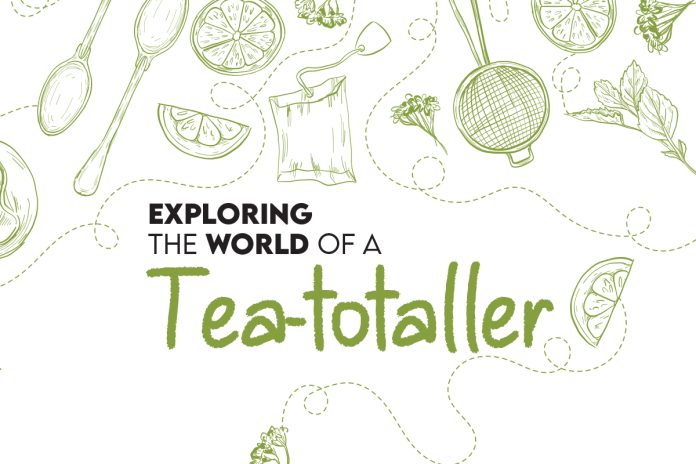There is a fine art to not just making and savouring India’s favourite cuppa, but also brewing a deeper understanding of Indian tea
Words by Susmita Das Gupta
My journey into the world of tea began with a profound appreciation for its complexity and richness, much like how people appreciate fine wine or art. As I delved deeper, I realized that tea is more than just a beverage; it’s an experience, a cultural treasure, and an art form that can be savoured on multiple levels. This realization ignited a passion in me to share this experience with others, especially those who may not yet understand the depth and diversity of tea. I wanted to demystify tea, highlight its subtleties, and educate people about the wide range of flavours, aromas, and traditions associated with it. Conducting workshops seemed like a natural way to introduce people to the art of tea appreciation, allowing them to experience firsthand the magic that a well-brewed cup of tea can offer.
Tackling tea-time misconceptions
One of the most prevalent misconceptions about Indian tea is that it’s synonymous with chai—strong, milky, and spiced. While chai is a beloved and iconic aspect of Indian tea culture, it’s only one recipe and represents just a fraction of what Indian tea has to offer. India produces a vast array of fine teas, from the delicate and floral Darjeeling teas, known for their muscatel notes, to the bold and malty Assam teas, and the bright and brisk Nilgiri teas. Additionally, regions like Himachal, Sikkim, Arunachal, and Munnar produce distinctive teas that are gaining recognition.

Another misconception is that Indian teas are inferior to those from countries like China or Japan. In reality, Indian teas are among the finest in the world, with certain estates producing teas that are highly sought after globally, sometimes fetching thousands of dollars. In my workshops, I aim to showcase the vast diversity of Indian tea, introducing participants to various types and grades, and highlighting the craftsmanship involved in producing each variety. This includes sensory appreciation, flavour profiling, brewing and steeping techniques, and even food pairing.
3. Could you explain the significance of tea in Indian culture?
Although India has been producing tea for more than 150 years, drinking tea as a daily ritual is relatively new, becoming widespread in households only during the 1960s. Despite its slow start, tea has become the most consumed beverage in India and now holds a deeply significant place in Indian culture.

It’s not just a drink but a symbol of hospitality, comfort, and social bonding. Offering tea to guests is an age-old tradition in India, signifying warmth and welcome. Tea is woven into the fabric of daily life, with millions of Indians beginning their day with a cup of chai. It’s integral to social interactions, business meetings, and even spiritual practices. Beyond its social role, tea is a vital part of India’s economy, as the country is one of the largest tea producers and exporters in the world. Tea gardens in regions like Assam, Darjeeling, and Nilgiris are not only economic hubs but also cultural landmarks. My workshops often explore the cultural rituals and stories associated with tea in India, helping participants appreciate its deep-rooted significance.
The evolution of tea culture
Tea culture in India has evolved significantly. Traditionally, tea was a simple, homemade brew, often prepared with milk, sugar, and spices. However, recent years have seen a growing appreciation for the diversity and sophistication of tea. The younger generation, influenced by global trends, is now exploring green teas, white teas, oolongs, and herbal infusions.

Though still emerging, the café culture has played a role in this evolution, with tea lounges and specialty tea shops offering curated tea experiences. Additionally, the health benefits of tea have gained more attention, leading to a rise in demand for organic and wellness teas. The emergence of tea tourism, with experiences like tea trails and estate visits, has further enriched tea culture in India. My workshops reflect this evolution, introducing participants to both traditional and contemporary tea practices. I also curate immersive tea trails in different tea regions of the country.
There’s a saying with tea: “Don’t love tea for the wrong reasons.” I fully endorse this thought. Instead of solely positioning tea as a wellness drink (though every tea has its health benefits), it’s important to elevate it as a piece of art and science with profound positive and holistic impacts. We need a paradigm shift in how tea is perceived, and I am actively working on this transformation.

Susmita Das Gupta is the first global Tea Artist from India, teaching the art of making and drinking fine tea. She us the founder of Indian School of Tea, which aims to bridge the gap in tea education and appreciation in India.


